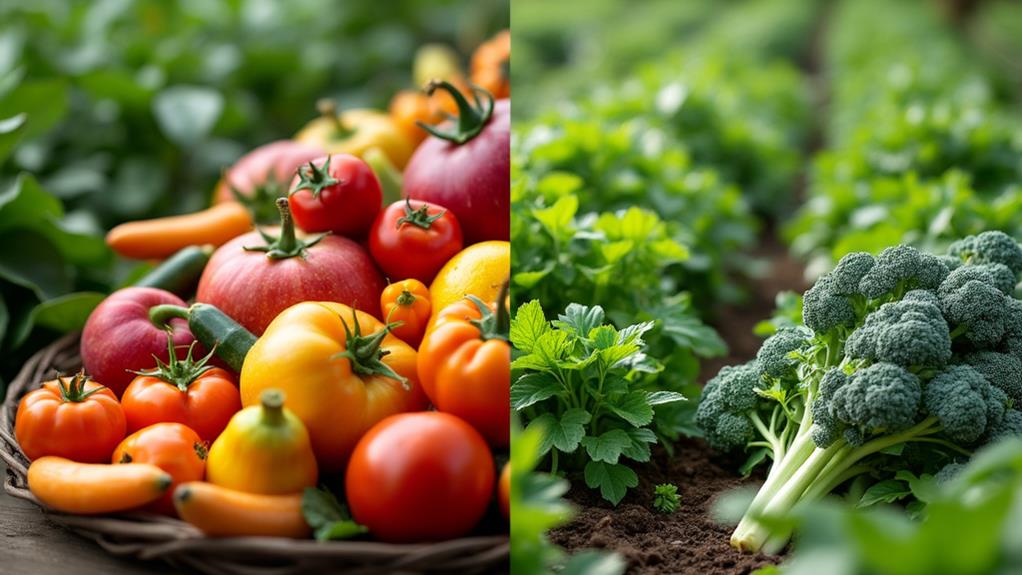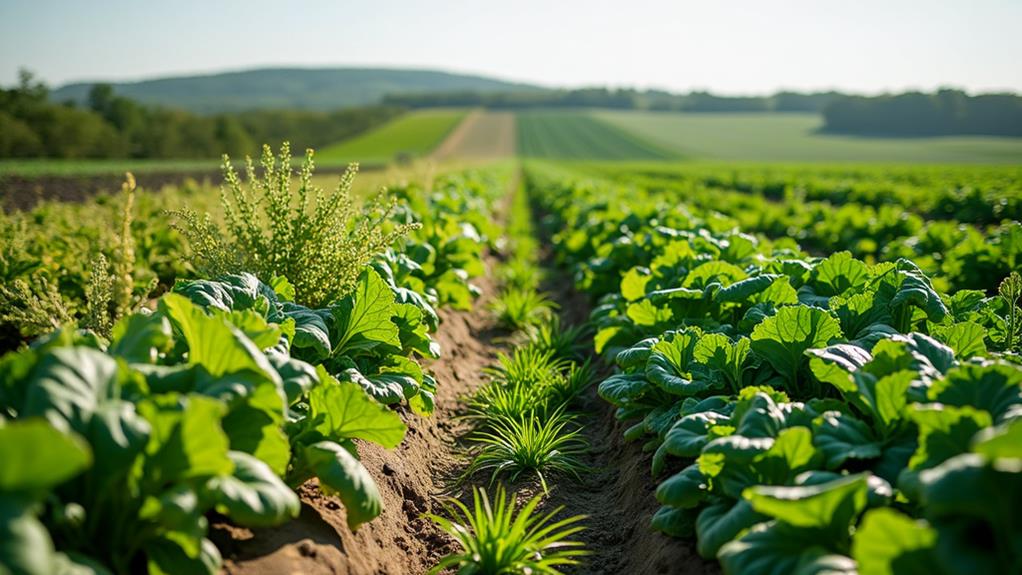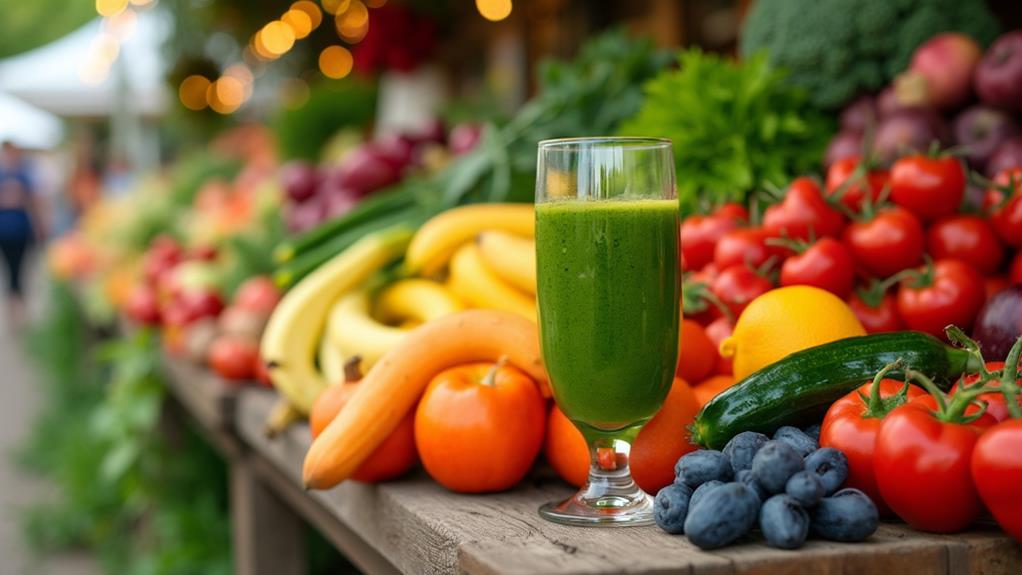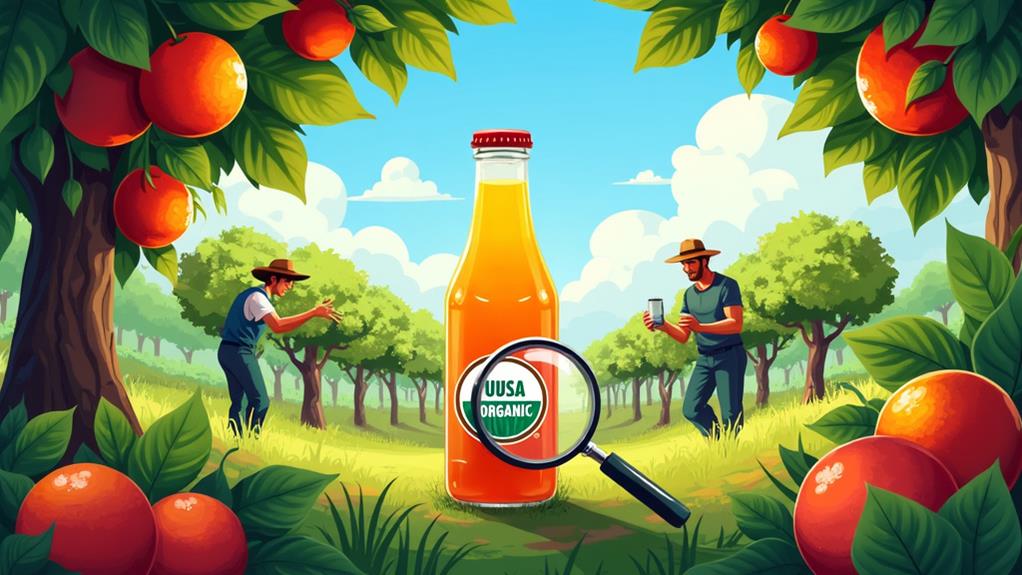Organic Vs Non-Organic: Understanding the Differences

Choosing between organic and non-organic foods involves understanding the differences in farming practices and their impacts on health and the environment. Organic farming uses natural methods, avoiding synthetic pesticides and GMOs, and promotes soil health and biodiversity. In contrast, conventional farming often relies on chemical inputs and monoculture, which can lead to soil degradation. This raises important questions about food safety, regulatory standards, and nutritional content. What does this mean for your grocery shopping and general well-being? Let's explore these aspects in more detail.
Farming Practices
Organic and conventional farming practices differ significantly. Organic farming prioritizes natural fertilizers like compost and manure to enrich the soil, while conventional farming often relies on synthetic pesticides and chemical fertilizers, which can lead to soil degradation and reduced biodiversity over time.
Organic farmers emphasize crop rotation and cover crops to maintain soil health and prevent erosion, improving soil fertility and promoting a thriving ecosystem. In contrast, conventional farming often focuses on monoculture, growing the same crop season after season, which can deplete soil nutrients and harm biodiversity.
Organic farming adheres to strict USDA Organic Standards, prohibiting the use of genetically modified organisms (GMOs), ionizing radiation, and sewage sludge. Conventional farming does not have these stringent restrictions and allows the use of GMOs and other synthetic aids.
For weed control, organic farmers rely on methods such as hand weeding and mechanical cultivation, avoiding chemical herbicides. This fosters a more diverse and balanced environment, encouraging beneficial insects for natural pest control, unlike conventional farming's chemical-heavy approach.
Food Safety
Farming practices distinguish organic from conventional methods, but food safety findings show a more nuanced picture. According to Health Canada, no evidence suggests that organic food is inherently safer than conventional food. While organic foods avoid synthetic pesticides, herbicides, and fertilizers, they may still use natural or plant-based pesticides, which also raises safety questions.
Research indicates that bacterial contamination risks are similar for both organic and conventional foods, so one should not be assumed safer than the other. However, organic foods do offer the health benefit of reduced pesticide exposure. Specifically, organic food consumption, particularly in children, results in lower levels of pesticide residues compared to conventional diets.
It is crucial to remember that food safety encompasses more than just pesticide presence; bacterial contamination is a common concern in both organic and conventional foods. Ongoing research continues to evaluate the long-term health impacts of pesticide consumption in conventional food production. Therefore, while organic options may reduce pesticide intake, they do not automatically ensure higher food safety standards.
Regulatory Standards

When evaluating organic versus non-organic foods, it is crucial to understand the stringent regulatory standards that govern organic certification. In Canada, products must adhere to the Canadian Organic Standards and display the Canada Organic Logo if they consist of 95% or more organic ingredients. Similarly, the USDA in the United States enforces rigorous guidelines to ensure that organic products are devoid of synthetic additives and GMOs, thereby preserving the principles of organic farming.
Organic Certification Requirements
Achieving organic certification requires adherence to rigorous standards set by regulatory bodies to ensure the integrity of organic labeling. In Canada, you must comply with the Canada Organic Standards (COS) and the Organic Products Regulations to meet certification requirements. Your products must contain at least 95% organic content to display the Canada Organic Logo, which signifies compliance with these stringent standards.
In the U.S., the USDA Organic certification is the benchmark. To qualify, crops must be grown without most synthetic pesticides, herbicides, or fertilizers for at least three years before harvest. The USDA also strictly prohibits the use of genetic engineering and ionizing radiation.
For organic livestock, you must provide organic feed and refrain from using routine antibiotics or growth hormones. These practices are part of the broader framework of organic farming required for certification.
While small-scale farmers earning less than $5,000 annually from organic sales might not need certification, any certified products must adhere to specific handling and production standards to be marketed as organic.
Labeling and Compliance
Understanding the rigorous standards for organic certification is essential to grasp how labeling and compliance operate within these frameworks. In Canada, organic foods must meet the Canadian Organic Standards (COS) and be certified under the Organic Products Regulations to display the Canada Organic Logo. This logo signifies adherence to stringent standards.
Similarly, the USDA mandates that products labeled as organic must be certified. There are specific labeling categories: "100% organic," "organic" (at least 95% organic content), and "made with organic" (at least 70% organic content). Products with less than 70% certified organic ingredients can state "organic" on their labels but cannot use the organic seal or logo.
Compliance with organic handling standards is crucial for market access, ensuring all stages of production, processing, and distribution adhere to organic practices. This integrity is fundamental to maintaining consumer trust in the organic market.
Interestingly, producers earning less than $5,000 per year in organic sales may be exempt from certification. This exemption allows smaller farms to participate in the organic market without bearing the financial burden of compliance, fostering a more inclusive organic community.
Standards for Organic Farming
Organic farming standards in both the U.S. and Canada ensure that agricultural practices adhere to rigorous guidelines. In Canada, the Organic Products Regulations enforce adherence to the Canada Organic Standards (COS) for organic certification. To display the Canada Organic Logo, products must contain at least 95% organic content, confirming compliance with these standards.
In the U.S., the USDA enforces organic farming standards, which prohibit the use of synthetic pesticides, fertilizers, and genetically modified organisms (GMOs). For organic livestock, animals must be raised without routine antibiotics or growth hormones and must be fed organic feed.
Comparison of Organic Farming Standards
| Criteria | Canada (COS) | USA (USDA) |
|---|---|---|
| Certification Body | Canada Organic Standards (COS) | USDA |
| Organic Content Requirement | At least 95% | At least 95% |
| Synthetic Pesticides | Prohibited | Prohibited |
| GMOs | Prohibited | Prohibited |
| Animal Feed | Must be organic | Must be organic |
| Antibiotics and Hormones | Prohibited | Prohibited |
Organic certification is voluntary for producers earning less than $5,000 annually in organic sales; however, those exceeding this threshold must comply with established organic handling and farming standards. By adhering to these stringent criteria, organic farming ensures products are produced sustainably and healthily.
Nutritional Content
When comparing the nutritional content of organic and non-organic foods, studies show that both types have similar macronutrient values, including protein, fat, and carbohydrates. This means that whether you choose organic or conventional foods, the basic nutrient content remains largely the same.
However, there are some differences worth noting. Organic crops often have higher concentrations of antioxidants, particularly polyphenols, which offer health benefits. While this might suggest some nutritional superiority, the overall evidence is still inconclusive. Additionally, organic dairy products frequently contain more omega-3 fatty acids due to the feeding practices in organic farming.
A notable advantage of organic foods is the lower levels of toxic metabolites and pesticide residues, which could be beneficial for long-term health. Despite these benefits, the nutritional quality of both organic and non-organic foods remains high. Therefore, it is more important to focus on maintaining a balanced and varied diet rather than stressing about the organic status of specific foods.
Cost and Accessibility

Choosing between organic and non-organic foods often hinges on cost and accessibility. Organic foods typically cost about 50% more than their non-organic counterparts due to labor-intensive farming practices and lower yields. These higher prices can make organic foods less accessible, particularly for those on a tight budget. If budget constraints are a significant concern, you might lean towards non-organic food options.
| Factor | Organic Foods | Non-Organic Foods |
|---|---|---|
| Cost | Higher prices | Lower prices |
| Accessibility | More limited | Widely available |
| Farming Practices | Labor-intensive | Conventional |
| Market Sales (2017) | $45.2 billion | Not specified |
| Consumer Choices | Budget-constrained | Budget-friendly |
Availability can also pose a challenge. In rural areas or regions with fewer grocery stores that stock organic items, finding organic foods can be difficult. Despite this, the organic food market reached $45.2 billion in sales in 2017, indicating a growing consumer preference. Nevertheless, the price disparity between organic and conventional food often steers consumers towards more budget-friendly non-organic options. Balancing your budget while aiming for healthier choices can be challenging, but understanding these dynamics can help you make informed decisions.
Market Trends
The choice between organic and non-organic foods often depends on personal preference and budget. However, market trends indicate a significant shift towards organic products. The global organic food market is valued at approximately $92 billion USD annually, reflecting a high consumer demand for these products, often linked to better health perceptions.
In the United States, the organic food market reached $45.2 billion in sales in 2017, with a growth rate of 6.4% in the organic sector. Several factors drive this trend:
- Health-conscious consumers: Predominantly female, with higher education and income levels.
- Increased availability: Organic produce and products are more accessible than ever.
- Perceived health benefits: Many consumers believe organic foods are healthier than conventional options.
- Environmental concerns: There is growing awareness of the environmental impact of conventional farming.
- Expansion of organic farmland: From 2014 to 2015, organic farmland increased by 14.7%, totaling 50.9 million hectares.
Fruits and vegetables lead the way, accounting for $16.5 billion in organic sales, over one-third of total organic food sales. With Australia holding the largest share of organic farmland, the distinctions between organic and conventional produce are becoming more prominent in the market.




